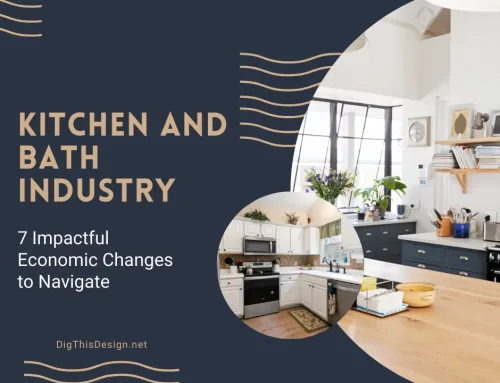In today’s fast-paced, tech-driven world, staying ahead of the curve is essential for running a profitable interior design business. Over my 40-year career, I have seen a lot of changes, from the internet, to working virtually with outsourcers. Anything new can be scary, but what I learned is that you need to lean into the change and use it for your benefit. If you don’t, the world isn’t waiting for you and will move on without you.
One of the most impactful shifts reshaping the industry is the adoption of AI for interior design firms. Artificial Intelligence is no longer a futuristic idea; it’s a practical tool that can drive efficiency, save money, and increase your bottom line.
Whether you’re a solo designer or running a large firm, integrating AI into your business model isn’t just smart, it’s becoming essential. Here are seven ways that AI for interior design firms is rapidly transforming operations and driving profitability.
How to Implement AI for Interior Design Firms

1. Automating Repetitive Tasks
Admin work eats up valuable hours that could be spent on creative or client-facing tasks. AI platforms can now handle scheduling, invoicing, and email responses with near-human efficiency. By automating these time-consuming tasks, AI for interior design firms frees up time for designers to focus on what they do best: design.
2. AI-Driven Design Visualization
AI-powered tools like virtual staging, floor plan generators, and real-time 3D rendering software are game changers. These tools allow clients to “walk through” a space before any physical work begins. For interior design firms, this means fewer revisions, faster approvals, and happier clients—all of which contribute to higher profitability.
The growing availability of AI for interior design firms also means that rendering tools are more accessible than ever, with quick learning curves and cloud-based systems that don’t require high-end hardware.
3. Smarter Client Matching and Lead Qualification
Marketing and client acquisition can be both costly and time-consuming. AI can analyze your past projects, client preferences, and even social media engagement to help identify ideal client profiles. This means your team can spend less time chasing low-probability leads and more time nurturing the ones that will convert.
With AI for interior design firms, customer relationship management systems (CRMs) become smarter, suggesting follow-ups or flagging leads that are more likely to convert, streamlining the sales process significantly.
4. Optimizing Project Management
Project delays can eat into profit margins fast. AI tools help manage timelines, budgets, and task allocation by predicting potential bottlenecks before they happen. For example, an AI-driven system might notice that a vendor often misses deadlines and suggest an alternative automatically.
Using AI for interior design firms in project management not only minimizes costly mistakes but also increases client satisfaction by keeping projects on track and under budget.
5. Improved Inventory and Procurement Planning
Managing inventory and sourcing materials is a major part of any interior design business. AI platforms can monitor vendor pricing, predict supply chain disruptions, and suggest alternative materials, sometimes before your team even realizes there’s an issue.
By leveraging AI for interior design firms, you gain data-driven insights that optimize purchasing decisions, reduce waste, and keep costs under control, contributing directly to your bottom line.
6. Enhancing Team Collaboration and Communication
Whether your team is in-house or spread across multiple job sites, AI-powered communication tools like Slack bots, scheduling assistants, or real-time translators can keep everyone on the same page.
AI for interior design firms can enhance remote collaboration by integrating voice assistants, smart calendars, and automated reminders, reducing the need for meetings and improving overall workflow efficiency.
7. Data-Driven Business Insights
Finally, one of the most valuable applications of AI for interior design firms is in data analytics. AI can analyze historical data, client reviews, and market trends to generate real-time business intelligence. This allows you to make smarter decisions about marketing, staffing, pricing, and service offerings.
By understanding exactly what’s working and what isn’t, interior design firms can become more agile and responsive—two traits that are critical for sustained growth in a competitive market.
Final Thoughts
AI isn’t just about replacing human input—it’s about enhancing human creativity and efficiency. The firms that embrace AI for interior design firms now will position themselves as leaders in the next era of design business. From streamlining operations to optimizing profitability, the advantages are too significant to ignore.
As the technology becomes more accessible, affordable, and easy to integrate, there’s never been a better time to explore how AI for interior design firms can work for you. Whether you start small—automating just one or two processes—or go all in, each step forward brings measurable returns.





